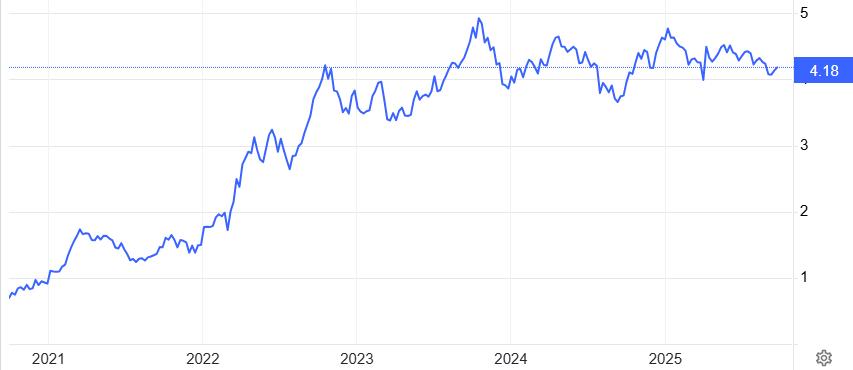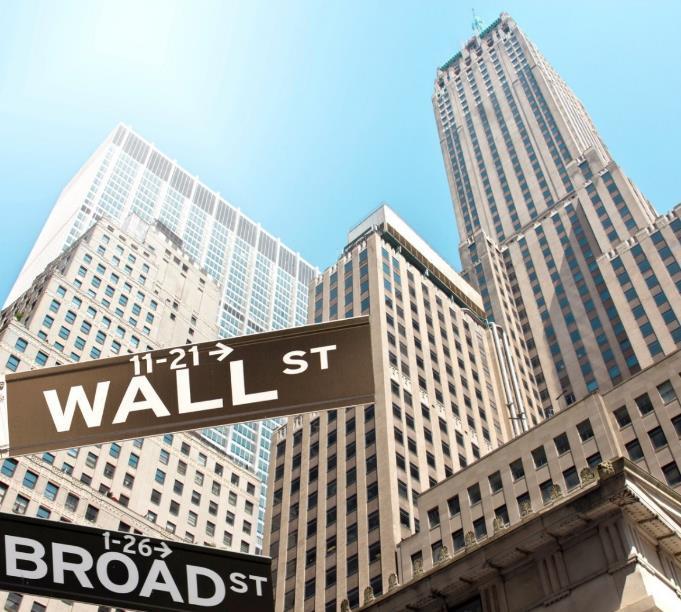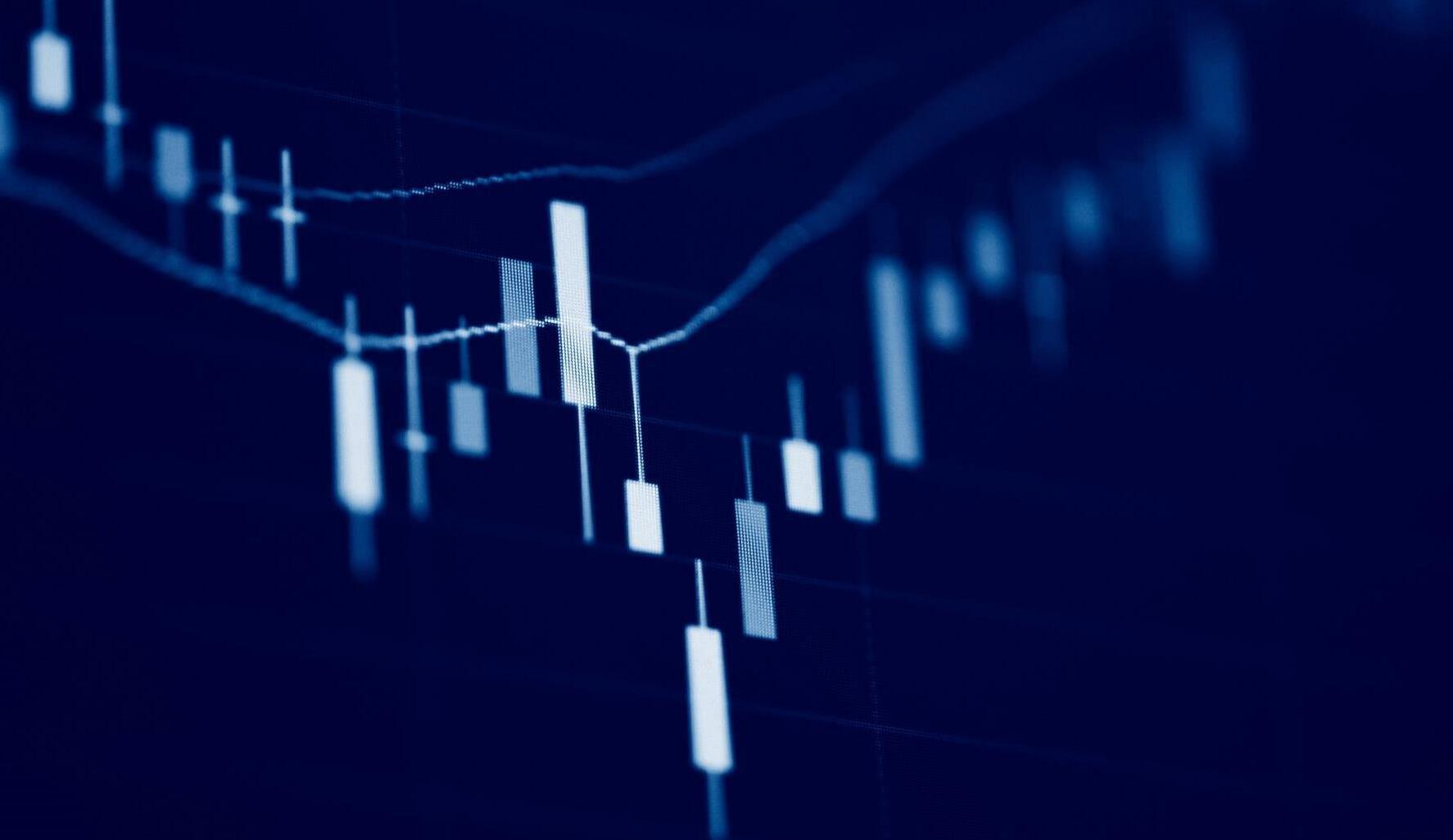








• The National Bank of Hungary kept its key interest rate unchanged at 6.50% for the eleventh consecutive meeting in September, in line with market expectations. The forint strengthened to a 15-month high, supported by a wider interest rate differential following the US Federal Reserve’s recent rate cut, offering some temporary relief to inflation pressures Still, government-imposed price caps and delayed service sector price adjustments could fuel a post-election inflation rebound, posing upside risks for 2026
• Hungary’s annual inflation rate stood at 4.3% in August 2025, unchanged from July and in line with forecasts Price growth accelerated in several categories, including alcohol and tobacco (7.3% vs 6.9%), energy and fuels (11.0% vs 10.9%), services (5.4% vs 5.3%), and consumer durables (2 4% vs 2 1%), while food and nonalcoholic beverages remained stable at 5.9%.
• Meanwhile, wages continued to rise strongly. In July 2025, average gross monthly earnings reached HUF 693,700 and net earnings HUF 479,500, marking annual increases of 9.0% and 9.4%, respectively. Adjusted for inflation, real wages were 4 9% higher year-on-year Over the January–July period, both gross and net wages rose by 9.1% compared to the same timeframe in 2024.

• Hungary’s industrial production volume in July 2025 was 1.0% lower than a year earlier, with the working-day adjusted index matching the non-adjusted figure. Most manufacturing subsectors recorded declines. On a seasonally and working-day adjusted basis, industrial output rose 2.0% month-on-month, but over January–July 2025 it was still down 3.5% year-on-year. Out of thirteen manufacturing subsectors, production declined in eleven, led by a 13.8% drop in electrical equipment manufacturing. The largest subsector, transport equipment, contracted by 2.9%.
• By contrast, retail activity showed resilience. In July 2025, the volume of retail trade grew by 1.7% year-on-year in both raw and calendar-adjusted terms. Food retail sales (specialized and non-specialized) rose by 2.3%, while non-food retail trade expanded by 2 9% For the January–July period, food retail volumes increased 2 8%, and non-food sales were up 4.2%.
• On the financial side, the EUR/HUF traded around 392 on 26 09, with the stable base rate lending support to the currency However, risks remain due to a stronger US dollar and uncertainty surrounding Hungary’s divestment from Russian oil.
• Meanwhile, Hungary’s 10-year government bond yield stood at 6 86% on September 25, reflecting steady but cautious investor sentiment

Source: Trading economics
• European natural gas futures have traded near €32 per megawatt-hour since mid-September, supported by ample inventories and steady LNG transactions. As part of its latest sanctions package against Russia, the European Union has proposed a full ban on Russian LNG imports starting January 1, 2027, aiming to further restrict Moscow’s ability to finance the war in Ukraine The United States has reiterated its readiness to boost LNG exports to Europe, with new production capacity expected to come online in the coming years.
• Meanwhile, Brent crude futures climbed toward $70 per barrel on 26. 09, hovering near an eight-week high and on track for the strongest weekly gain since early June. Rising tensions around Russian oil exports fueled supply concerns, though some momentum was tempered by the resumption of Kurdish oil shipments and waning expectations for imminent US rate cuts, which could have otherwise supported demand through stronger economic growth.
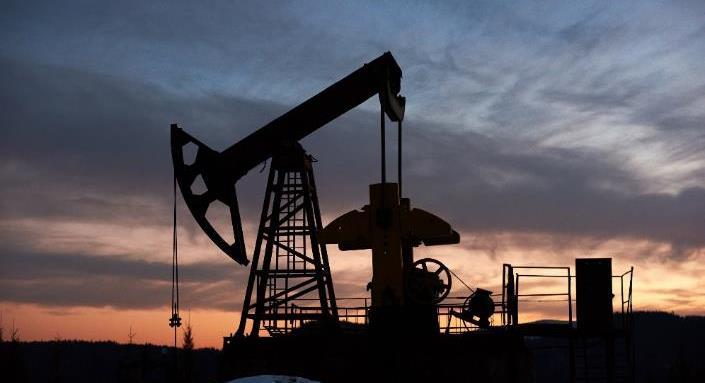
• The European Central Bank (ECB) left its three key interest rates unchanged, with the deposit facility at 2.00%, the main refinancing rate at 2.15%, and the marginal lending rate at 2.40%, in line with expectations Inflation remains close to the ECB’s 2% medium-term target, with the outlook broadly unchanged from June. Updated staff projections see headline inflation averaging 2.1% in 2025, easing to 1.7% in 2026 before edging up to 1.9% in 2027.
• Euro area inflation was confirmed at 2.0% in August 2025, slightly below the preliminary 2.1% estimate due to a sharper-than-expected fall in energy prices. This marks the third consecutive month that inflation has met the ECB’s target, strengthening expectations that monetary policy will remain steady Core
inflation excluding food, energy, alcohol, and tobacco was unchanged at 2.3%, its lowest level since January 2022.
• In Germany, industrial production rose 1.3% month-on-month in July 2025, rebounding from a revised 0.1% decline in June and matching forecasts Growth was led by machinery and equipment (+9 5%), automotive manufacturing (+2.3%), and pharmaceuticals (+8.4%). On a three-month comparison, output was 0.1% lower between May and July versus the prior three months, but on an annual basis, total production grew 1.5%, recovering from a 1.8% decline previously.
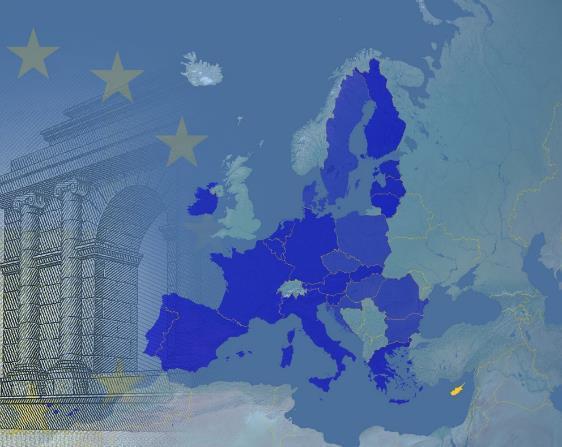
• The US annual inflation rate accelerated to 2.9% in August 2025, the highest since January, after holding at 2.7% in June and July, in line with market expectations. Core inflation remained unchanged at 3 1%, matching July’s level and February’s peak
• The unemployment rate ticked up to 4.3% in August from 4.2% in July, the highest since October 2021 and consistent with forecasts The number of unemployed rose by 148,000 to 7.38 million, while the broader U-6 unemployment rate which includes discouraged workers and those in involuntary part-time employment climbed to 8.1% from 7.9%.
• In financial markets, the 10-year US Treasury yield held above 4 17% on September 26 after two consecutive days of gains, as investors awaited the release of the PCE price index, the Federal Reserve’s preferred inflation gauge, for further policy direction.
